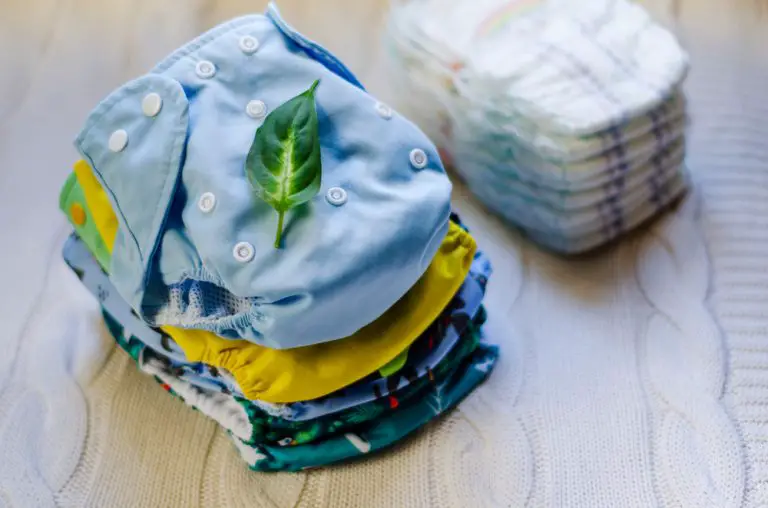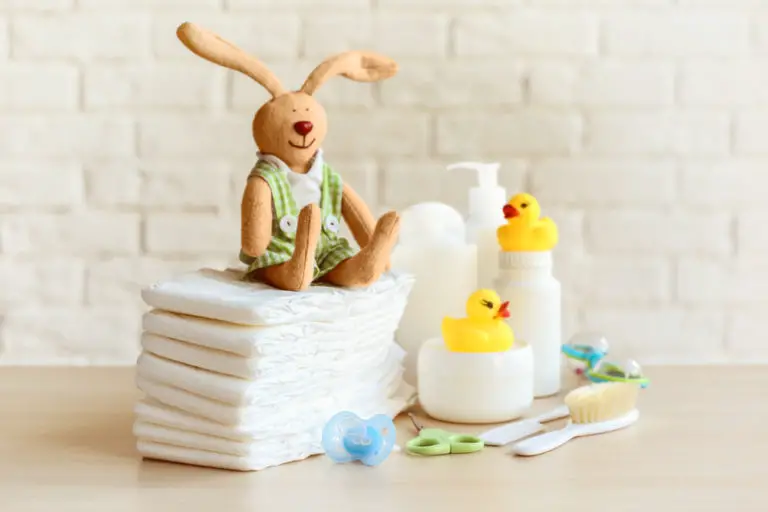Cloth Diapering Fabric in 2024 (Layer-by-Layer Guide)
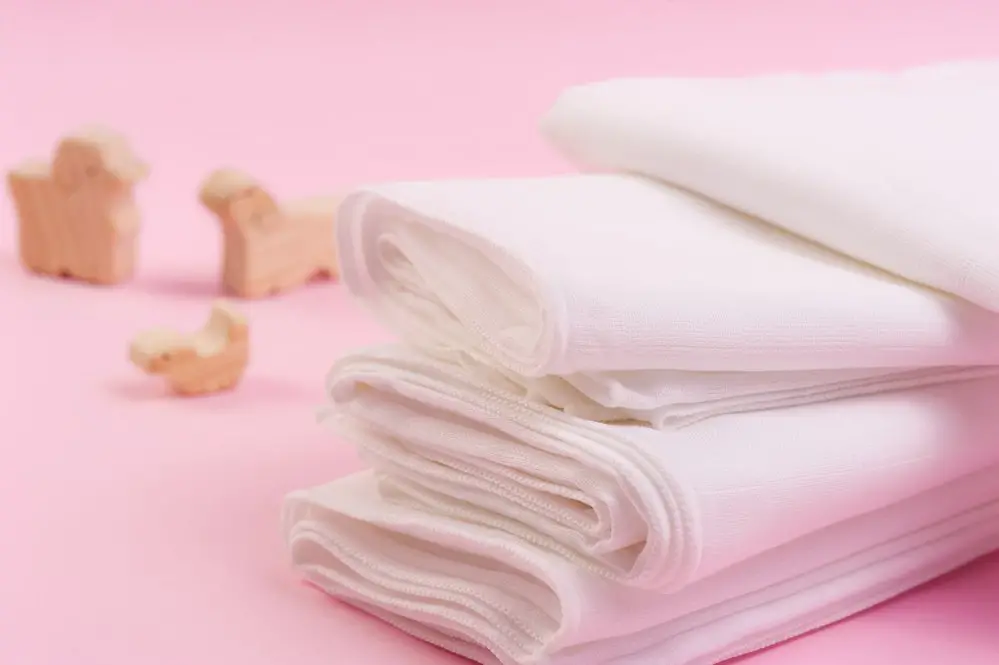
You may not realize it, but cloth diapers are a lot more complex than they seem on the surface. You are probably aware that there are different styles and look, but did you realize they come in a myriad of fabrics?
Cloth diapering fabric consists of different fibers, textures, and fabric types, as well as different fasteners that go with all of them. This article walks you through the different fabrics, styles, covers, and more that make up the cloth diaper world.
- Importance of the Fabric
- Waterproof Layers
- Absorbency Layers
- Multipurpose Cloth Diaper Materials
- Stay Dry Fabrics
- Cloth Diaper Fastener Materials
Importance of the Fabric
If you are reading this article, your initial thoughts are likely how important is the type of diaper fabric and does it really matter if I use cotton instead of wool or vice versa? Well, it depends on how you want your cloth diapers to work for you.
Are you looking to go with all-natural materials? Maybe you’re worried your baby will have an allergic reaction to a specific fabric because you do. Perhaps you are only using cloth part-time, or maybe absorbency is your biggest concern.
There isn’t a right or wrong cloth diaper fabric. It will all boil down to what you are looking for in a cloth diaper, your budget, and what is most realistic for you to wash and dry regularly.
Waterproof Layers
The waterproof layers of cloth diapers are commonly made from PUL (polyurethane laminate) and TPU (thermoplastic polyurethane). The waterproof layers act as a barrier to prevent your baby’s diaper from leaking, which keeps their clothing and your carpets and furniture clean and dry.
All-in-ones, hybrids, and pocket diapers will have this layer on the fabric attached to the absorbency layer. Prefolds and flats will need a separate waterproof later that goes over the top of the diaper.
Because of the resurgence of interest in cloth diapers over the last few decades, waterproof fabrics for diapers are now available in a wide variety of colors and patterns.
PUL (polyurethane laminate)
PUL (polyurethane laminate) is made by applying a thin laminate layer of polyurethane onto the fabric. PUL diaper fabric is thin, stretchy, and breathable and is also used to make wet bags.
It is a durable fabric which means it can withstand lots of washing (which is necessary for cloth diapers), and because it is breathable, your baby is less likely to develop diaper rash.
PUL works well as a waterproof diaper fabric because you can also wash it at very high temperatures, and it is easy to find in fabric stores if you are crafty and wish to sew your own diaper covers or wet bags.
TPU (thermoplastic polyurethane)
TPU (thermoplastic polyurethane) is the laminate layer applied to a fabric to create PUL. TPU in itself is not in itself a waterproof diaper fabric; it is what is bonded with a knit fabric to make a diaper’s fabric waterproof; it’s a little confusing.
TPU is often tossed around as if it were a separate type of material. But, to keep it simple, remember this TPU is what makes PUL diaper fabric.
PUL used to be made using a lot of chemicals which created nasty byproducts for the environment. The good news is that most diaper companies bond TPU to cloth diaper fabrics using a thermal bonding technique.
Fleece
Fleece is one of the most commonly used diaper fabrics. It is incredibly soft and breathable, making it a great choice if your baby is prone to diaper rash. In addition, fleece is easy to wash and dries quickly.
Fleece is water repellent, so it makes a good diaper cover fabric. However, since it is not technically waterproof, you will need to change your baby’s diaper and cover more often than when using a PUL cover.
A fleece cloth diaper is inexpensive to make, and you can also use the fabric to make a diaper cover that is long like pants, so it doubles as clothing to keep your baby warm.
Wool
Wool is one of the best waterproof diaper fabrics available. It is absorbent, breathable, naturally antibacterial, and odor resistant and, when treated with lanolin, becomes waterproof.
The downside to wool is that it is trickier to wash and needs to be re-lanolized regularly. Wool diapers should ideally be washed by hand and laid down flat to dry or hung in the sun.
They also tend to be more costly than the other types of waterproof diapers, but there is a new trend of upcycling old woold sweaters and turning them into diapers that is making more affordable ones available.
How to Choose a Waterproof Layer of Fabric?
The newer way of creating PUL via thermal bonding does make the fabric a little less hearty, but it is by no means flimsy. When purchasing cloth diapers, not all waterproof diaper fabrics are made equally. Check to see where the diapers are manufactured. This is an instance where cheaper is usually not better.
That isn’t to say there aren’t some less costly diapers that are still well made but don’t jump at the first cheap brand you discover. Cheaply made diapers are likely to delaminate quicker than more costly ones. Delmaniation is when a diaper’s materials start to separate, and the TPU layer begins to peel off.
If you want to avoid PUL altogether, then your top two choices are fleece and wool. So, you will need to consider how often you can wash and dry and how much you want to spend on your cloth diapers, as fleece tends to be significantly cheaper than wool.
Absorbency Layers
The absorbent layer is crucial to a cloth diaper’s function. If a diaper’s absorbent material is subpar or you’re not using the right kind, you will experience leaks.
The type of absorbency layer will depend on the style of diaper you chose and whether it is night or day. For example, some absorbent fabric holds more liquid, making it ideal for overnight diapers.
The most common absorbent fabric materials are bamboo, cotton, organic cotton, modal, hemp, and polyester.
There are also different types of absorbent layers, including boosters, liners, inserts, and soakers. The type of insert you use will depend on the style of cloth diaper you have.
Bamboo
Bamboo is a very popular absorbent material for diapers. Bamboo is highly absorbent and is a sustainable resource. In addition, bamboo grows quickly and easily, making it a trendy choice for paper products as well.
Bamboo inserts can be found as reusable, washable pads and as diaper liners that are biodegradable and flushable. Reusable bamboo inserts and diapers are also biodegradable once they have reached the end of their life.
Additionally, bamboo is the best wicking fabric for cloth diapers, breathable and hypoallergenic.
The two main downsides to bamboo diapers are that they are more costly than other cloth diaper materials, and they tend to hold onto stains more.
Cotton
Cotton cloth diapers are another extremely popular choice. Cotton tends to be the least expensive fabric for cloth diapers and is a very breathable material.
If you choose to use prefolds or flats, cotton baby diapers can be repurposed as burp cloths, towels, and cleaning rags.
Cotton is an environmentally friendly choice because it is 100% biodegradable and all-natural. Cotton diapers are easy to wash and line dry, and because they are inexpensive you can stock up and have plenty on hand.
Because diaper cotton fabric is all-natural there is no chemical smell, and they are absorbent and comfortable for your baby to wear.
Organic Cotton
Cotton is an extremely popular textile around the world and is often mass-produced on large farms. Organic cotton is not treated with pesticides or other chemicals, and it uses less water to produce, making it an even more eco-friendly choice.
Organic cotton also tends to be a higher quality material and is often used to make high sheets, towels, and bedding.
The cost will be slightly higher than traditional cotton, and it is likely to show wear and tear quicker. Organic cotton is known to contain fewer allergens than regular cotton, so if you or your baby has sensitive skin, organic may be the route to go.
Modal
Modal is a fabric made from wood pulp and is similar to bamboo. It is considered a rayon fabric, and it has a very soft silky feel which maintains its softness even after repeated washings. Modal is a very absorbent cloth holding about 50% more liquid than cotton.
Modal is resistant to mineral build-up which can lessen a diaper’s absorbency; this is another reason it makes an excellent choice for cloth diapers. If you have hard water, consider purchasing cloth diapers made from modal to cut the frequency of stripping your diapers down.
Hemp
Hemp is an excellent natural fiber that is resistant to bacteria growth. Hemp can hold more liquid than cotton, but it is much slower to absorb it; therefore it is common to see hemp combined with another fabric such as cotton.
Hemp has a lower eco-footprint than some of the other materials because it uses fewer resources to produce.
Hemp is a very strong and durable fabric that can extend the life of your diapers. A hemp/cotton blend may be one to consider if you plan on using your diapers for more than one baby.
Polyester
Polyester is one of the most absorbent fabrics making it one of the best fabrics for cloth diapers. Polyester is man-made, so if you are looking to go all-natural this will not be the route for you.
Polyester is highly durable and can withstand multiple washes. However, it can be prone to build up, which makes it less absorbent. Build-up will result in you needing to strip your diapers to get them back to peak absorbency.
Polyester comes in a variety of forms including zorb, microfiber, and Minky.
Zorb
Zorb is an absorbent fabric material that was invented in 2007 specifically for cloth diapers.
Zorb is a fabric blend that consists of bamboo, cotton, and polyester. It wicks moisture away quickly, and according to the Wazoodle website, the maker of Zorb, it soaks up wetness twenty times faster than other diaper materials.
You can also use Zorb to make burp cloths, towels, nursing pads and bras, and mattress pad covers. It is probably the most absorbent fabric for cloth diapers on the market.
Microfiber
Microfiber is a synthetic material that is made of strands of thread thinner than silk. Most microfibers are made by combining polyester with polyamide, a synthetic polymer. Because of the way the fabric is constructed, it is highly porous and absorbent.
Microfiber is one of the top absorbent fabrics, but it cannot be placed directly next to your baby’s skin. Microfiber inserts are popular in pocket diapers since the insert slides into a pocket and isn’t directly touching any skin.
Some people also double-layer a microfiber insert with another absorbent layer on top. Doubling up inserts is a popular option for babies who wear cloth diapers overnight.
Minky
Minky is an incredibly soft polyester fabric. It has a similar feeling to fleece, but it is softer and thicker.
Minky is commonly used to make baby blankets, clothing, and burp cloths. Minky is also used to make cloth diaper covers because it is soft and absorbent.
The Minky company makes diaper inserts that are commonly used in pocket diapers with brands like Fuzzibuns, but they are microfiber, so they cannot be used without a protective layer. The Minky inserts are not made from the same super soft material as blankets or diaper covers.
Super Soaker Material (SSM)
Super soakers are thick pads or inserts that are placed inside a cloth diaper to help with absorbency. They are most commonly used in pocket diapers but can be placed in any cloth diaper style, especially if the diaper’s material is not naturally super absorbent, such as cotton.
Super soakers come in different lengths and thicknesses and can be made of all of the absorbent materials discussed in the previous section of this article.
It is important to remember that when selecting a super soaker fabric that microfiber cannot be placed directly against your baby’s skin. Therefore, you will need to layer it with another fabric insert such as cotton or bamboo or use them solely in pocket diapers.
How to Choose an Absorbency Layer Fabric?
Choosing the best absorbent fabric for your cloth diapers will depend on your preferences, budget, and how you plan to use cloth diapers.
If your baby will be wearing cloth diapers 24/7, a more budget-friendly option like cotton or bamboo might work best for you. Cotton prefolds and flats require a bit more effort to use but wash easily and dry extremely quickly.
If you have a little more cash to spend and want a designer look, you may opt for diapers made from organic cotton or Minky covers.
If you are ok with a man-made material then Zorb is an excellent choice due to its affordability and super absorbency capability. Adding a zorb or microfiber layer to your baby’s diaper at night can also prevent leaks and make sleeping cozier for your baby.
Multipurpose Cloth Diaper Materials
Some cloth diaper materials can be used for a variety of purposes. For example, many people use the same fabrics to create bibs, changing pads, diaper covers, liners, and burp cloths.
You can repurpose cotton and Zorb, probably the two most widely used diaper materials, several ways. Both of these materials can be used as cleaning cloths and, due to their durability, can withstand repeated washings.
Microfiber super soakers can be resued as dusting pads or as sponges to wash things like your bathtub and shower. Did you know there were so many diaper cloth fabric uses?!
Stay Dry Fabrics
A stay dry to fabric is a fabric that feels mainly dry to the touch even once it has become wet. It is usually a man-made fabric. It works by wicking moisture away from the skin to the fabric’s surface when it then evaporates.
Microfleece, suede cloth, and sherpa are all stay dry fabrics used in the making of cloth diapers.
Because of the renewed interest in cloth diapering, many stay dry fabrics come in fun, child-friendly patterns, and colors. So whether you decide to make cloth diapers yourself or purchase them, you should be able to find a style that fits you!
Microfleece
Microfleece is synthetic wool made from polyester. Microfleece is exceptionally lightweight and tough, making it an excellent choice for cloth diapers. In addition, microfleece is a great choice to help keep your baby’s bottom warm.
Microfleece is an extremely soft and fluffy fabric that will feel gentle to your baby. Microfleece is affordable, water-resistant, and dries very quickly.
You can use microfleece to make both the diaper cover as well as the super soakers and diaper lining. It is a highly versatile fabric when it comes to cloth diapering.
Microfleece is not typically used as an overnight diaper because the stay-dry fabric may not be able to absorb an overnight super pee quickly enough.
Suede Cloth
Suede cloth is a highly absorbent diaper fabric. One massive benefit of this ultra using the absorbent material in diapers is that it is thick, silky, and doesn’t pill like microfleece. As a result, suede cloth is able to go through dozens and dozens of washes and stay just like new.
It is not recommended that you use suede cloth on its own at night as the stay dry technology may make it less absorbent depending on the baby’s position.
Suede cloth is better than microfleece when it comes to cleaning out older baby poop, but microfleece is easier for exclusively breastfed babies.
Sherpa
Sherpa is a stay-dry fabric that can either be a synthetic blend or made from cotton. Sherpa gets its name because it looks and feels like wool and is named after the Sherpa people from Nepal.
Sherpa is excellent at wicking moisture away and is more lightweight than fleece. Sherpa is also easy to wash and dry, and while it may develop some pilling, it is usually easy to avoid by allowing it to air dry in the sun.
Sherpa is a warm and insulating fabric like fleece, and it provides many of the benefits of wool without actually using actual animal products.
Cloth Diaper Fastener Materials
There are neary as many different types of cloth diapers and fabrics as there are different styles of fasteners. Some cloth diapers come with fasteners already built-in, like snaps or velcro. Other diapers will require you to use separate fasteners you attach on your own.
Common diaper fastener materials include hook and loop, snaps, Snappis, and touch tape. Some people still use traditional diaper pins as well, but these have become less popular as there is more potential you could accidentally hurt a squirmy baby during a diaper change.
Hook and Loop
Velcro, Aplix, are Touctaoe are probably the most commonly used hook and loop fasteners in cloth diapers.
A hook and loop fastener uses minuscule hooks (the scratchy or rigid side) and tiny loops (the soft side). When the two sides come into contact with each other, the hooks grab onto the loops securing the two pieces together.
If you are making your own diapers at home, Velcro, Aplix and Touchtape are easy ways to create DIY diaper fasteners with minimum effort.
Aplix sells a wide variety of styles and colors, many of which are resistant to heat, UV, and humidity.
Velcro also sells multiple types of sew-on materials in various widths and colors. Their Soft & Flexible tape is probably the most used for homemade cloth diapers.
Snaps
Snaps are very common on manufactured cloth diapers and can be found on All-in-ones, Hybrids, or All-in-twos and pocket diapers.
Snaps on cloth diapers are usually made of plastic. They are convenient and easy to use. The one downside to snaps is that they can wear out or break. To help preserve the snaps on your cloth diapers, always follow the manufacturer’s recommendations for washing and drying.
Drying diapers with snaps in the dryer will wear them down quicker than line drying and reduce the life span of your diapers.
Snappis
Snappis are a name-brand diaper fastener that has a corner of the market all to itself. Snappis are designed to be used with flat or prefold diapers that are made from thick, woven fabrics. Snappis have small teeth that grip onto the fabric, so they will not work on microfleece or thin, gauzy fabrics.
Snappis are inexpensive and can be purchased from most major retailers that sell baby and diaper supplies. They are much easier to use than diaper pins and much safer for your baby. They may take some practice to get just right but once mastered are quick and easy!
How to Choose a Fastener Material?
Your choice of fastener material is going to depend on the type of diaper you select. If you choose to go with pocket, hybrids, or all-in-ones, they will come with built-in snaps.
If you are making your own diapers or are using prefolds or flats, you can choose from any of the available fasteners. You could even sew on snaps if you have the time, patience, and skill to do so.
Lastly, consider how you will be washing and drying your diapers. If you need to use a dryer for convenience or pure necessity, then Snappis or even traditional diaper pins are probably the best choice since they won’t go in the machine.
Also read: Muslin Fabric: Properties, Pricing & Sustainability
FAQ
What fabric should I use to make cloth diapers?
You can use various fabrics to make cloth diapers, including cotton, organic cotton, bamboo, hemp, fleece, and wool.
Where can I buy cloth diaper material?
You can purchase cloth diaper material from your local craft or fabric store and many major retailers that sell fabrics online.
What are cloth diapers made of?
Cloth diapers are usually made of a combination of natural and synthetic materials such as wool, hemp, bamboo, microfiber, polyester, fleece, or sherpa.
How to make cloth diapers waterproof?
If using wool, you can lanolize it; otherwise, you can use a PUL fabric or a stay-dry fabric such as microfleece, sue cloth, or sherpa.
What are cloth diaper covers made of?
Diaper covers can be made of various fabrics such as wool, fleece, Minky, or any fabric that has been treated to become PUL.
What is PUL cloth?
PUL is a fabric that has been treated with TPU, a thin, plastic laminate that makes the fabric water-resistant.
What type of fabric is most absorbent?
Zorb is a highly absorbent synthetic fabric. Bamboo and wool are two natural fibers that are very absorbent as well.

Laurel Davidson
Laurel brings her passion for parenting and years of problem-solving experiences to ParentingMode. She is the editor of ParentingMode, ensuring that the content is relevant and valuable to the readers. Laurel received her master’s degree in public administration with a certificate in economic development. She is a stay-at-home mom, raising two adorable kiddos, Aurora and Thomas. Laurel enjoys sharing her experience as a parent, traveling, and good food.

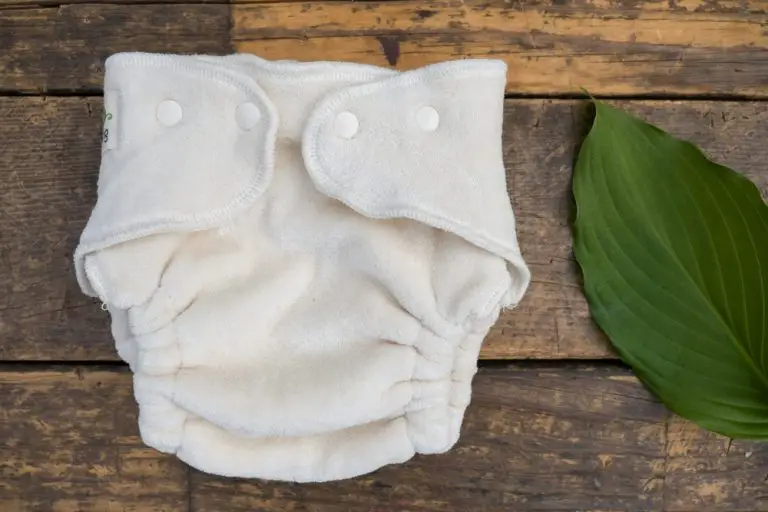
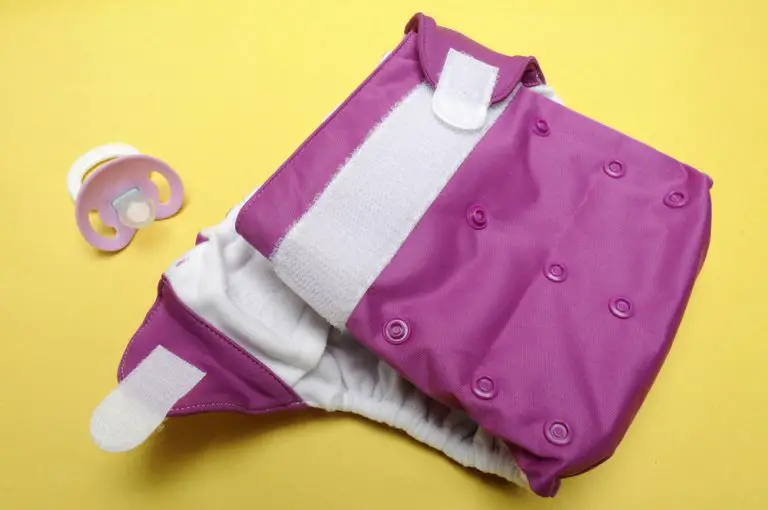
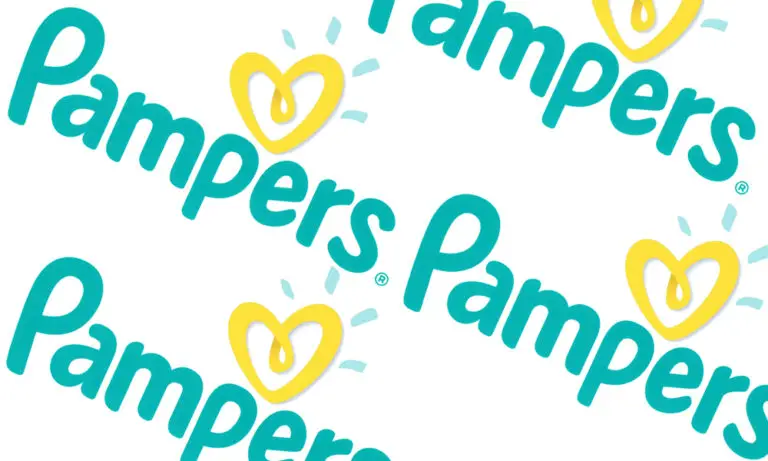
![10 Fragrance-Free Diapers in 2024 [Chemical-Free and Safe]](https://parentingmode.com/wp-content/uploads/2022/05/Depositphotos_376506414_S-768x512.jpg)
